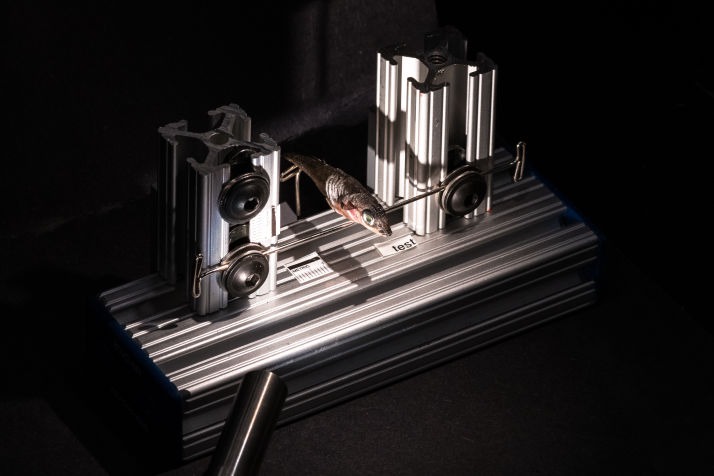Fish swimming. I have a number of projects aimed at understanding the relationship between median fins, mechanical properties of the body, and swimming performance. The core of my dissertation aims to understand how thrust generated by the tail is affected by small scale flow environments created by the median fins and caudal peduncle. I also aim to understand how these effects have shaped the evolution of the stickleback immune response to parasites. I am approaching these questions with a biomimetic robotic system, flow visualization, and live fish experiments.

Fish feeding. African cichlids have undergone the largest adaptive radiation of any vertebrate lineage. Much of this diversification revolves around the craniofacial feeding structures of these fish. A great deal of work has gone into understanding the developmental basis underlying this variation. I am interested in understanding how the developmental variation causes performance variation, helping us connect these evolutionary patterns to the selective pressures that shaped them.

Trinidadian guppy evolution. Guppies in Trinidad are famous for their rapid evolution after migrating into mountainous headwaters that lack predators. This environmental shift is accompanied by a trophic niche change in which the same upstream populations are forced to forage on benthic algae instead of their ancestral invertebrate food source. This shift from trophic generalist to benthic specialist is similar to the evolutionary history of other fishes such as the African cichlids, however, the divergence is much more recent in guppies. I am interested in both the similarities between cichlids and guppies in morphological evolution due to shared selective pressures, as well as the differences between them due to age of the radiations and due to differences in their ancestral jaw biomechanics. This work will help us understand how adaptive divergences arise as well as the importance of biomechanical contingency in their outcomes.

Other research interests. I am involved in a number of other research projects in collaboration with a diverse set of colleagues. These projects include working with researchers at the Wyss Institute to characterize the swimming of a biohybrid robot made of human heart cells and controlled with light pulses. My work with colleagues from the University of Connecticut aims to understand the locomotory consequences of parasitic infection in stickleback.

Offline Website Maker
Contact Me